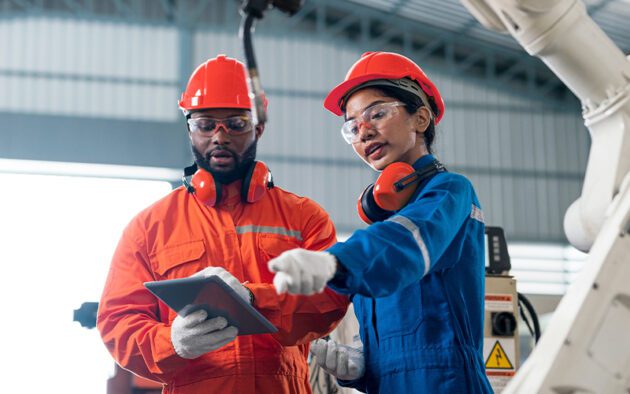As human capital management (HCM) technology rapidly evolves, organizations face the challenge of adapting effectively. A deep understanding of today’s workforce needs is crucial. When top-level executives misjudge what drives employee engagement and productivity, the results can be more than costly, leading to high turnover and inefficiencies.
The 2021 Workforce Experience Gap emphasized this point, revealing a significant disparity between the viewpoints of managers and deskless shift workers on how their organizations were working to engage, develop, retain, and attract talent successfully.
Conducted the following year again, the 2022 Workforce Experience Gap surveyed real employees and managers on their perspectives on scheduling, job training, pay rates, employee recognition, feedback, and communication. Compared to the 2021 results, 2022 found that while organizations are more aware of their employees’ needs, they need to take more action to address them.
Drawing from the data, the 2022 Workforce Experience Gap provides three key takeaways on expanding the employee experience while reaching new business potentials.
1. Use Mobile Technology to Manage and Engage a Digitally Native Workforce
By 2025, 75% of the workforce will be digital natives raised on the interconnectedness of computers, the internet, and cell phones. Outdated technology or manual processes in the workplace can be especially frustrating for a digitally savvy workforce, who enjoy the ease and convenience of their modern devices in their personal lives. Antiquated systems are more than an inconvenience to workers, especially those working outside of a typical office environment. With quick access to a central digital information hub, employees can avoid ineffective time management, time tracking, planning, and poor judgment calls.
The 2022 Workforce Experience Gap results revealed a significant employee demand for mobile access to training, workplace communications, and schedules.
For example, 46% of employees said they preferred receiving training and information via a mobile application, but only 20% reported having such access in their organizations. Regarding communicating with coworkers and managers, 45% of employees preferred an integrated mobile solution, but only 14% reported having such access.
TIP: To create technological continuity between employees’ professional and personal lives, employers should consider utilizing the smartphones and devices that most employees already own. Workplace technology on par with today’s most popular mobile apps allows them to harness their digital literacy while gaining more autonomy and control over their roles.
2. Promote Work/Life Balance with Flexible & Predictive Scheduling Solutions
Every working person knows that life is a constant balancing act between their professional and personal lives. Today’s employees want to work for organizations that strive to even the scales.
In the recent published Ventana Research Viewpoint, Modern Workforce Scheduling Requires a New Mindset, for front-line deskless workers, scheduling flexibility is second only to payroll in HCM processes that drive employee sentiment. A major component of work/life balance is predictable and flexible scheduling. Despite this, the 2022 Workforce Experience Gap results indicate that many organizations ignore these needs.
According to the data, 55% of employees experience shift pattern changes from week to week. The same percentage of employees report receiving their schedules at most one week in advance. The study also found that only 25% of employees had access to an online scheduling platform, with many relying on communication from management or traveling to a physical work location to receive their information.
When asked about schedule flexibility, 39% of employees reported they did not receive flexible scheduling, and 37% said they did not receive scheduling assistance for personal circumstances.
TIP: Work/life balance significantly affects employee satisfaction, reducing absenteeism, increasing productivity, and encouraging engagement. Employers looking to attract and retain the next generation of workers should consider modern workforce technology that makes accessing and managing schedules easy for employees, no matter where they are.
3. Leverage Real-Time Data & Feedback Loops to Drive Operational Improvement
As organizations across the globe struggle to attract and retain top talent, it’s clear that listening to employee needs is essential to moving the working world forward. The modern workforce is ready to be heard, but their needs run the risk of being overlooked without the correct platforms.
The 2022 Workforce Experience Gap found that 74% of employees said they would choose to work for an employer who regularly asked for feedback over one who did not.
TIP: Employers must find ways to keep communication lines open between them and their employees. At the same time, employers need other methods of gathering feedback, like real-time data and analytics. Modern workforce technology’s analytical software and smart communication technology allow organizations to do both. Tapping into the power of people, these solutions make it easy to gather in-the-moment feedback and make informed decisions geared the drive the evolving workforce.
These takeaways offer a small peek into the 2022 Workforce Experience Gap’s findings. To discover more insights into employee job training, scheduling, pay rates, recognition, feedback, and communications, click here to read the full report.




